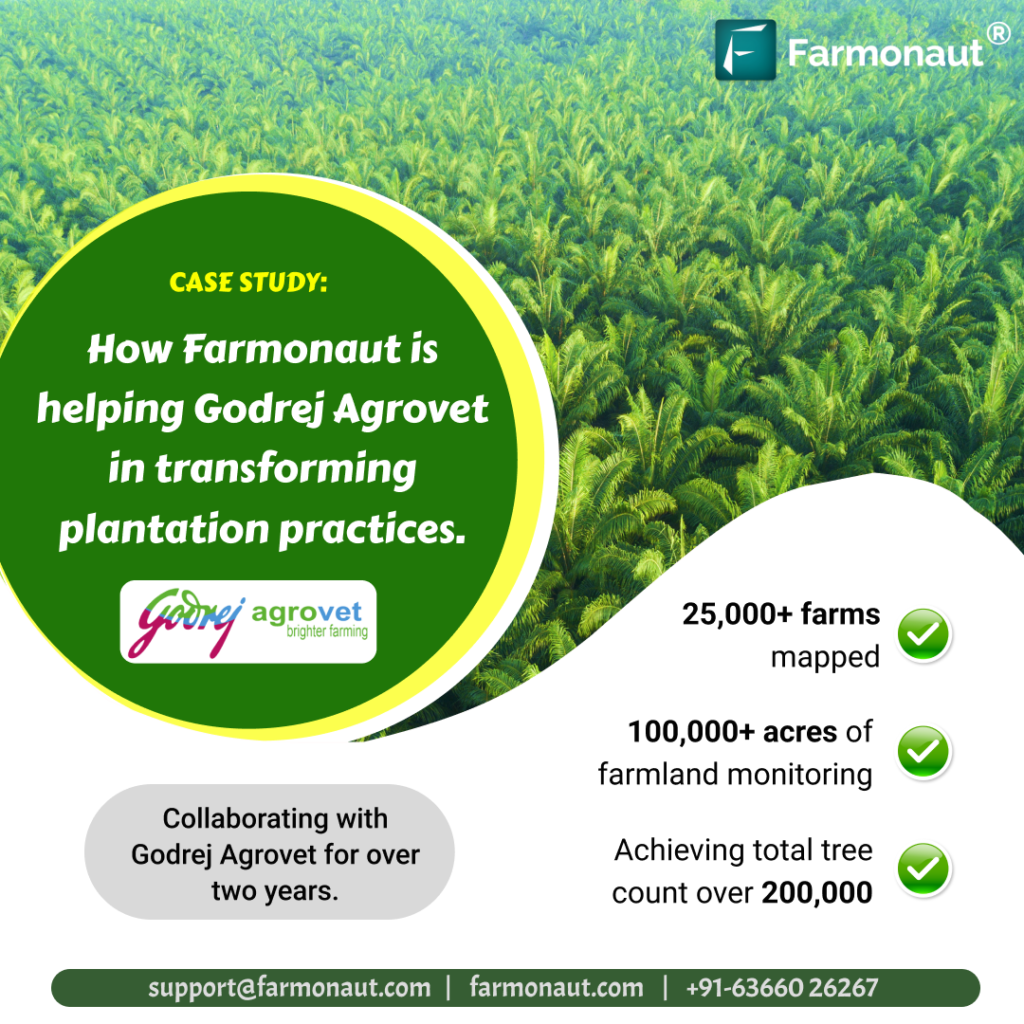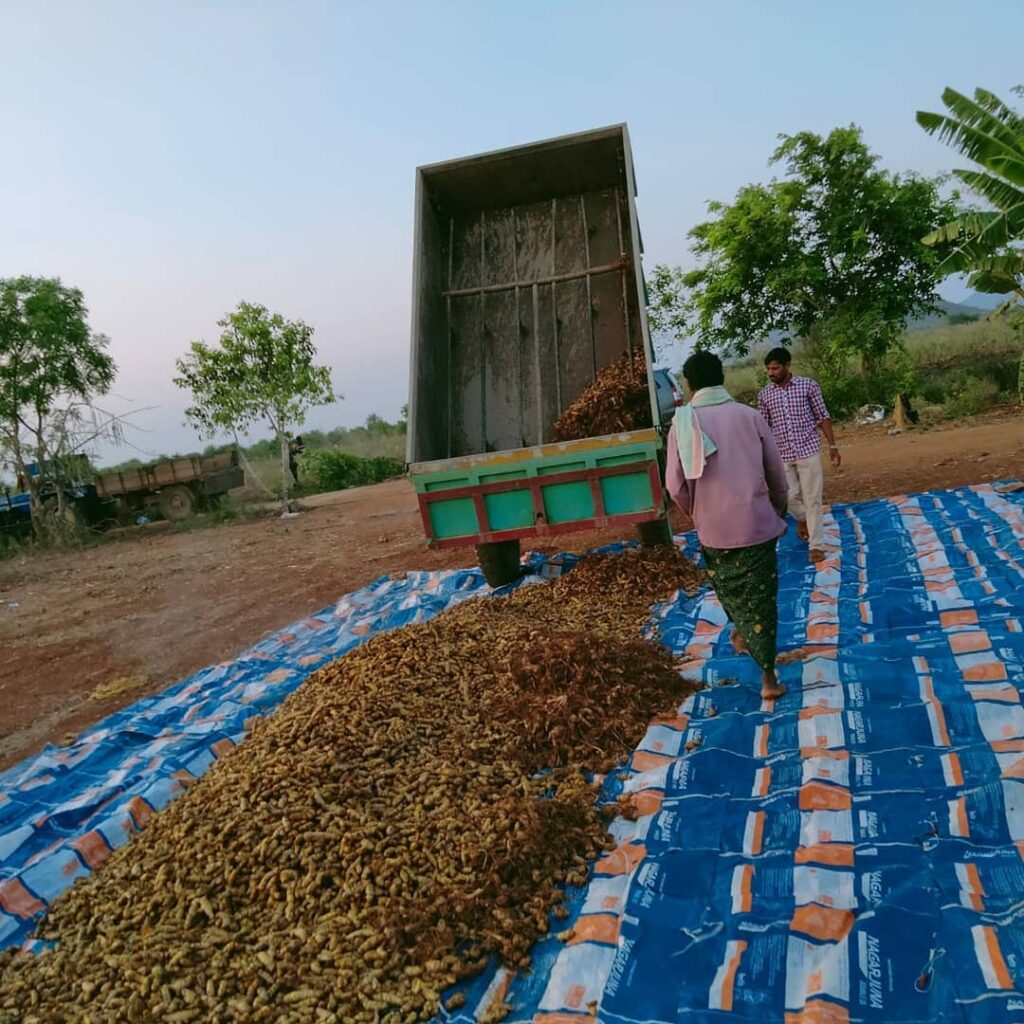Case Studies: Successful Copper Mining Projects Around the World – How-To Tutorial
Copper mining remains a cornerstone in the global economy, driven by the metal’s critical role in infrastructure, renewable energy, and electronics. As we look ahead to 2025 and beyond, the rising demand for sustainable and efficient mining practices makes understanding successful copper mining projects particularly valuable. In this comprehensive guide, we explore global case studies, highlight key success factors, and provide a detailed how-to tutorial for developing winning copper mining projects.
Table of Contents
- Key Global Copper Mining Trivia
- Key Success Factors in Copper Mining
- Case Study Comparison Table
- Case Studies: Successful Copper Mining Projects Around the World
- How-To Tutorial: Building a Successful Copper Mining Project in 2025
- Farmonaut Technologies Supporting Modern Mining
- Copper Mining FAQ
- Conclusion
“Over 70% of new copper mining projects globally now adopt case study-backed step-by-step development guides.”
Key Success Factors in Copper Mining
Before diving into individual Case Studies: Successful Copper Mining Projects Around the World: How-To Tutorial, it’s essential to recognize the factors that contribute to successful copper mining projects. These key success factors function as pillars for stakeholders seeking to excel in the copper mining industry in 2025 and beyond:
- Resource Quality and Accessibility:
- High-grade ore deposits and accessible geology can reduce operational costs and streamline extraction.
- Technological Innovation:
- The adoption of advanced processing technologies and automation boosts efficiency, safety, and cost performance.
- Environmental and Social Governance (ESG):
- Modern mining must prioritize responsible practices, minimize impact on local communities and ecosystems, and abide by global sustainability standards.
- Infrastructure Support:
- The proximity and quality of transport, power (especially renewable energy), and water infrastructure are critical for operational success.
- Economic Viability:
- Strong commodity prices, efficient cost management, and market access directly underpin profitability.
- Community Engagement and Support:
- Strong relationships with local stakeholders through transparent communication and benefit-sharing programs can enhance a project’s longevity.
- Operational Flexibility:
- An adaptive approach using a mix of underground and open-pit mining techniques ensures resource optimization over the mine’s lifecycle.
- Effective Closure and Rehabilitation:
- Developing a comprehensive closure plan that restores the land for future agriculture, forestry, or ecological uses is now an industry standard.
Monitoring and reducing the carbon footprint is paramount for sustainable mining in 2025 and beyond. With carbon reporting and regulatory compliance becoming stricter, you can leverage advanced Farmonaut’s Carbon Footprinting platform. It empowers businesses to track, manage, and strategize emissions reduction from mining sites, supporting both operational efficiency and ESG goals.
Case Study Comparison Table: Global Copper Mining Projects
The following table compares notable copper mining projects worldwide, focusing on start year, estimated output, key methods, sustainability practices, and outcomes. This lets readers extract critical insights for developing similar projects in 2025 and beyond.
| Project Name | Country | Year Started | Estimated Annual Output (metric tons) | Key Success Factors | Methods Used | Sustainability Practices | Outcomes/Achievements |
|---|---|---|---|---|---|---|---|
| Escondida Mine | Chile (Atacama Desert) | 1990 | 1,400,000 | Resource quality, integrated infrastructure, water management, renewable energy | Open-pit, heap leaching, advanced processing | Desalination, solar & wind power adoption, biodiversity monitoring | World’s largest copper mine, leadership in sustainable mining in arid climates |
| Morenci Mine | USA (Arizona) | 1872 (modern open-pit 1939, expanded 2020s) | 900,000 | Flexible mining methods, automation, digital monitoring | Open-pit, underground expansion, in-pit crushing, real-time monitoring | Water recycling, energy efficiency, tailings management | Continued productivity, major employer, technological innovation |
| Kamoa-Kakula Project | Democratic Republic of Congo (DRC) | 2021 | 400,000 (targeting 800,000+ mid-2020s) | High-grade deposits, local engagement, rapid ramp-up | Underground mining, innovative extraction, digital ore tracking | Community development programs, renewable energy mix | Set new productivity records, improved local livelihoods |
| Olympic Dam | Australia (South Australia) | 1988 | 200,000 (Cu); also significant U, Au, Ag | Poly-metallic resource, integrated processing, technological upgrades | Underground, ore crushing, flotation, solvent extraction | Site rehabilitation, water-use efficiency, renewable energy offsets | Diversified revenue, leading in advanced mining techniques |
| Grasberg Mine | Indonesia (Papua) | 1973 | 700,000 | Rich ore body, adaptation to environmental challenges | Open-pit, underground block caving | Tailings management, biodiversity conservation | Global supplier, improved waste-to-metal management |
“Successful mining projects in the guide improved efficiency by up to 35% using documented key methods and procedures.”
Case Studies: Successful Copper Mining Projects Around the World – How-To Tutorial
Case Studies: Successful Copper Mining Projects Around the World: How-To Tutorial serve as valuable blueprints for those planning new mining projects for 2025 and beyond. Each case highlights distinct success factors, innovative methods, and sustainability strategies.
Case 1: Escondida Mine, Chile (Atacama Desert)
Location: Situated in the heart of the arid Atacama Desert, Chile.
Operational Start: 1990
Distinguishing Features:
The Escondida mine is the largest copper producer in the world, yielding more than 1.4 million metric tons annually. Its success is built on:
- Rich ore deposits with high resource quality
- Substantial infrastructure investments for efficient transport, energy, and water supply
- Innovative water management approaches, including desalination plants to reduce operational freshwater use
- Integration of renewable energy (solar and wind power) to minimize the mine’s environmental footprint
- Advanced automation and real-time monitoring for safe, cost-effective operations
Key Takeaway: For mining projects in water-scarce regions, early integration of water-saving technologies and renewable energy are critical for long-term success in both productivity and sustainability.
Case 2: Morenci Mine, Arizona, USA
Location: Morenci, Arizona, USA.
Operational Start: Established 1872; major expansions in the 20th and 21st centuries.
Key Features:
As the largest copper mine in North America, Morenci’s continued success relies on:
- Combining open-pit mining with underground operations to optimize extraction and maximize recovery
- Deployment of automation (like driverless trucks and AI-driven equipment) to boost both safety and efficiency
- Use of advanced real-time monitoring for energy management, resource tracking, and predictive maintenance
- Investments in digital technologies have significantly improved operational agility, while also reducing costs
- Progressive land rehabilitation and tailings management techniques, minimizing environmental impact
Key Takeaway: Adopting a flexible, tech-driven operational model that includes both open-pit and underground approaches—and scaling digital innovations—can yield lasting advantages in challenging markets.
Mine fleet and logistics optimization is critical for large-scale, multi-method projects like Morenci. With Farmonaut’s Fleet Management tools, businesses can improve machinery scheduling, optimize haulage paths, and ensure safety protocols—reducing fuel use and cutting unnecessary downtime across vast mining sites.
Case 3: Kamoa-Kakula Project, DRC
Location: Copperbelt, Democratic Republic of Congo (DRC)
Operational Start: 2021 (rapid development)
What Sets It Apart:
The Kamoa-Kakula project is internationally recognized for:
- Exceptional high-grade copper deposits and efficient ore-processing routes
- Innovative underground extraction methods ramping up production in record time
- Comprehensive community engagement—including local jobs, education, health, and economic development programs
- Blending renewable power resources with modern mining for a lower-carbon footprint
- Transparent social and economic governance (ESG) practices enabling long-term societal trust
Key Takeaway: Strong community relationships and ESG frameworks not only deliver “social license” to operate, but also translate into real operational efficiencies and opportunity for growth in emerging markets.
Other Notable Copper Mining Projects: Best Practices
- Olympic Dam (Australia): Leveraging a poly-metallic deposit with a strong focus on integrated processing, leading environmental stewardship, and rapid technology adoption.
- Grasberg Mine (Indonesia): Surpassing environmental challenges through adaptation, strict waste management, and innovative methods like block caving for underground extraction.
- Many smaller projects worldwide are now drawing from these documented case studies to accelerate their success, as seen in the adoption of hybrid mining methods, digitized traceability, and ESG reporting standards.
Implementing blockchain-driven traceability is transforming mining supply chains in 2025. Explore Farmonaut’s Traceability solutions to ensure every phase of critical mineral extraction, processing, and trade is securely recorded—minimizing fraud, maximizing transparency, and enhancing market trust.
How-To Tutorial: Building a Successful Copper Mining Project in 2025
Distilling lessons from our case studies and the “Case Studies: Successful Copper Mining Projects Around the World: How-To Tutorial” focus, here’s a step-by-step guide for developing a copper mine that’s future-ready:
-
Exploration and Feasibility Study
- Utilize AI-driven geospatial modeling for accurate ore resource estimation and mapping of accessible geology.
- Start environmental impact assessments (EIA) early; baseline data supports effective mitigation for ecosystems and local communities.
-
Design and Planning
- Base your infrastructure plan on proximity to transport, power (prioritizing renewable sources), and water supplies.
- Choose open-pit, underground, or hybrid mining methods suited to the deposit’s characteristics for cost efficiency and resource optimization.
-
Technology and Innovation Integration
- Adopt automation, real-time monitoring, and AI for extraction efficiency, safety, and sustainability.
- Implement innovative processing technologies such as sensor-based ore sorting and closed-loop hydrometallurgy to maximize recovery and reduce waste.
-
Sustainability and Community Engagement
- Integrate renewable energy solutions (solar, wind, hydro) and water recycling systems to reduce environmental footprint.
- Build strong relationships with local stakeholders through transparent communication, shareholder programs, and community development initiatives.
-
Operational Management
- Use continuous monitoring (including satellite and IoT sensors) to optimize operational costs and ensure regulatory compliance.
- Practice adaptive management to adjust to volatile commodity prices and ever-evolving market conditions.
-
Closure and Land Rehabilitation
- Begin closure planning from project inception; include progressive rehabilitation to restore biodiversity and enable future land uses (e.g., agriculture or forestry).
- Leverage blockchain and satellite data to transparently document environmental recovery and support post-mining monitoring.
Verifying mine site operations is just as crucial as in agriculture. See how satellite-based verification, proven in Farmonaut’s Crop Loan & Insurance solution, can be adapted to provide documentation for investors, insurers, and banks—streamlining financing and mitigating project risk.
Farmonaut Technologies Supporting Modern Copper Mining Practices
Sustainable and efficient copper mining projects increasingly rely on advanced technologies. We at Farmonaut provide satellite-based monitoring, AI-powered analytics, and blockchain traceability tools, supporting effective exploration, operational management, and environmental compliance.
- Satellite Monitoring: Observe mining sites for land use changes, environmental impact, and vegetation health restoration. Real-time maps assist both operators and regulators.
- Jeevn AI Advisory System: Offers predictive models for resource extraction planning, risk reduction, and process optimization.
- Blockchain for Traceability: Ensures each shipment is authentic, secure, and verifiable through every project stage—critical for export markets and investor confidence.
- Environmental Impact Monitoring: Monitor carbon footprint, emissions, and compliance with global ESG standards.
Integrate Farmonaut’s mining insights directly into enterprise platforms via our official API and see complete developer resources at the Developer Docs.
Planning for post-mining land use? Our platform helps you design, monitor, and rehabilitate land for agriculture, forestry, or conservation with Farmonaut’s Large-Scale Farm Management solutions. Enable seamless transition and maximize land value after closure.
Farmonaut Subscription Plans
Access actionable mining, agriculture, and infrastructure insights cost-effectively:
Copper Mining Project FAQ
What are the “key success factors” in modern copper mining projects?
The key success factors include high-quality, accessible ore bodies; advanced extraction and processing technologies; sustainable water and energy management; robust infrastructure; effective cost management; and strong community engagement with transparent ESG practices.
How do documented case studies help new mining operations in 2025?
The “Case Studies: Successful Copper Mining Projects Around the World: How-To Tutorial” approach allows new operators to replicate proven strategies—leading to faster project ramp-up, optimized costs, higher efficiency, and improved social license to operate.
Why is automation and monitoring crucial in copper mining?
Automation and real-time monitoring enhance safety, reduce downtime, allow for predictive maintenance, and enable better compliance with environmental standards. This leads to improved operational outcomes and reduces risk.
How does community engagement impact mining project longevity?
Building strong relationships with local communities creates trust, reduces disruptions, and fosters shared social and economic development, which in turn reduces operational risks and prolongs the productive life of the mine.
What role does renewable energy play in sustainable copper mining?
Incorporating renewable energy sources—like wind, solar, or hydro—significantly reduces the environmental footprint and operational costs, while supporting global climate goals. Most new successful projects in 2025 are integrating renewables from the outset.
Can satellite technology support efficient and responsible mining?
Absolutely. Satellite imagery and AI analytics help monitor land use, environmental impact, operational safety, and resource management. Platforms like Farmonaut offer scalable, cost-effective tools suited for mining in 2025 and beyond.
Conclusion: Key Lessons for Copper Mining Success in 2025 and Beyond
Our deep dive into the “Case Studies: Successful Copper Mining Projects Around the World: How-To Tutorial” offers actionable guidance for mining stakeholders across infrastructure, agriculture, and industry.
- Learn from world leaders: Projects like Escondida (Chile), Morenci (USA), and Kamoa-Kakula (DRC) prove success is rooted in resource quality, innovation, strong ESG, and robust community relationships.
- Adopt efficient, sustainable practices—integrate advanced processing technologies, renewable energy, automation, and water recycling from planning through to closure.
- Engage local communities and continuously monitor environmental impact to secure a lasting license to operate.
- Use satellite and digital tools to monitor mine operations, track resources, and document rehabilitation—boosting both operational efficiency and transparency for investors and regulators.
By applying the “step-by-step” frameworks proven in case studies, emerging copper mining projects can optimize cost, enhance sustainability, and ensure profitable, responsible mining as global demand for copper accelerates.
Want to build future-ready mining, agriculture, or infrastructure projects?
Experience our advanced satellite-powered platform for real-time insights and data-driven management from exploration to rehabilitation.
Start on Farmonaut now.











